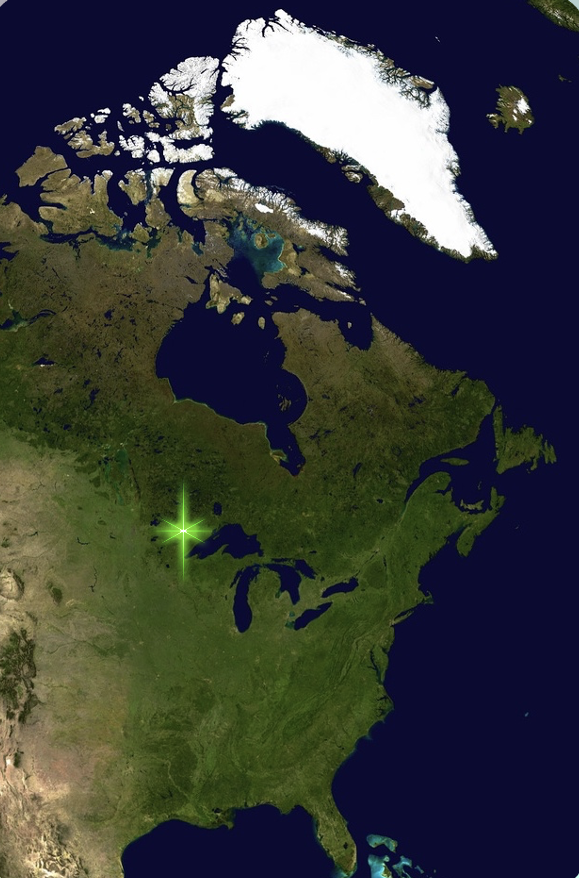Pulsar Helium Inc. (TSXV:PLSR) & (OTCQB:PSRHF), the helium project development company, has announced that it has received and interpreted a 20.4km long 2D seismic reflection survey at its Topaz Helium Project in the State of Minnesota, USA. The processed seismic data shows a continuous reflective package at the helium-bearing interval encountered in Jetstream #1, which has been imaged to extend approximately 1.5 km to the west and 2km to the east of the well. This gives the Company reasonable confidence that future wells could target this zone accurately. In addition, other reflective packages are visible in the processed seismic suggesting additional fracture zones, further increasing prospectivity and potential to drill into new discrete helium bearing fractures. The 2D seismic line adds complementary geologic detail to the existing ambient noise tomography (passive seismic) data which indicates a slowed seismic velocity layer beneath the current total depth of the Jetstream #1 well.
HIGHLIGHTS
- A single 20.4 km 2D reflection seismic line acquisition completed, processed and interpreted.
- The seismic data shows a continuous reflective package, which includes the helium-bearing zone has been imaged to extend around 1.5 km to the west and 2.0 km to the east of Jetstream#1.
- This successful imaging at Jetstream #1 and surrounding area highlights the suitability of reflection seismic to map the geometry of the helium-bearing-zone and other prospects in the region. Planning for additional 2D and passive seismic data acquisition is underway, considering the presence of what appears to be a regional system.
Josh Bluett, Technical Manager of Pulsar Helium, commented:“As we progress toward deepening Jetstream #1 to test the full extent of the interpreted helium-bearing zone, the team continues to evaluate the subsurface data. The recently acquired seismic line shows that the productive helium-bearing interval intersected in Jetstream #1 extends laterally. The additional active seismic data further supports the interpretation of the passive seismic and airborne geophysical data. This new data is very encouraging, and I look forward to the upcoming drill program.”
SEISMIC SURVEY DETAILS
As announced via news release on the 13th of August 2024, the 2D seismic reflection survey was acquired at the Company’s Topaz Helium Project in Minnesota in the months July-August, 2024. The line was oriented in a nominal E-W direction, passing 460 metres to the south of the Jetstream #1 appraisal well that successfully flowed gas with high-concentration helium to surface.
The Company has since received the processed data with interpretation conducted in collaboration with Prof. Nick Schofield. Nick is a tenured Professor of Igneous and Petroleum Geology at the University of Aberdeen, and a renowned specialist in seismic and field interpretation of intrusive igneous geology.
The Vertical Seismic Profile (VSP) and seismic sweep test line acquired in May 2024, enabled Pulsar to carefully evaluate and select optimal acquisition parameters for the recent 2D seismic line. Having this data for planning the seismic acquisition is critical in hard rock terranes, where seismic acquisition is challenging.
The seismic data shows a continuous reflective package associated with the layered mafic series intersected in Jetstream #1. This reflective package, which includes the helium-bearing zone, has been imaged to extend around 1.5 km to the west and 2.0 km to the east of Jetstream #1 on the line, with other potential fracture features mappable along the entire 20.4 km line.
This successful imaging at the Jetstream #1 appraisal well and surrounding area highlights the suitability of reflection seismic to map the geometry of the helium-bearing-zone and other prospects in the region and is a valuable complement to the existing ambient noise tomography (referred to as passive seismic) imaging. This combination of seismic techniques gives reasonable confidence for siting future wells targeting these zones.
The seismic is currently being incorporated into the Company’s 3D geological model, including ongoing interpretation of the high-resolution gravity gradient and magnetic data acquired by Pulsar Helium in May 2024.








































